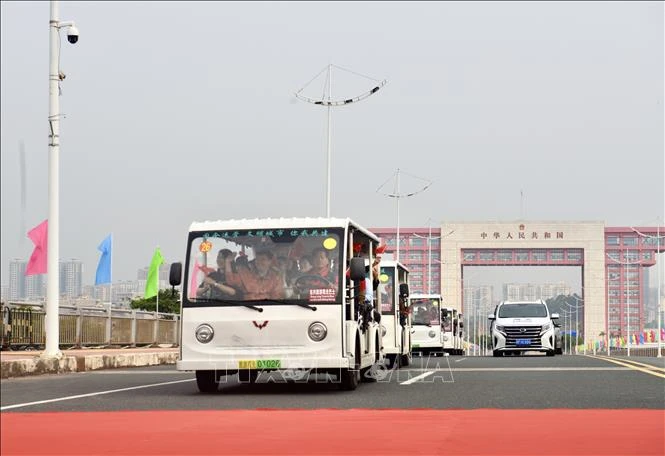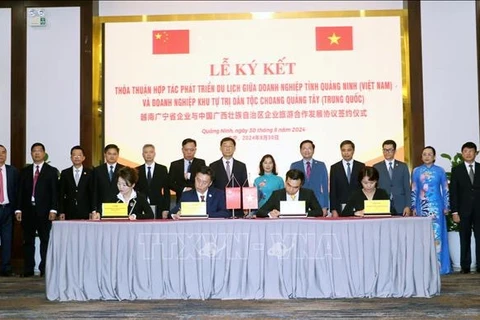
Quang Ninh (VNA) – A fixed passenger bus route connecting Ha Long in the northern province of Quang Ninh and Nanning city in China’s Guangxi Zhuang Autonomous Region through Bac Luan II Bridge, part of the Mong Cai (Quang Ninh, Vietnam) - Dongxing (Guangxi, China) international border gates was officially launched on September 3.
The route is jointly managed by the Quang Ninh Department of Transport and the Department of Transport of China’s Guangxi Zhuang Autonomous Region, and operated by two transport firms of Vietnam and China.
It is expected to contribute to diversifying tourism products of Ha Long, aiming to promote Quang Ninh tourism development.
As scheduled, a passenger bus departs at 9am (China time) from Nanning and arrives in Ha Long at 2:30 pm (Vietnam time) on every Tuesday, Thursday, and Saturday.
In the opposite direction, one bus will run from Ha Long at 10:30 (Vietnam time), and reach Nanning at 16:30 (China time) on every Wednesday, Friday and Sunday.
Each bus can carry maximum 48 passengers having a passport valid for at least six months and a valid visa.
According to the Mong Cai Customs Sub-Department under the Quang Ninh Customs Department, the sub-department will coordinate with relevant agencies to give guidance to people and businesses on customs clearance procedures, while closely monitoring means of transport during the temporary enter - re-exist process./.






















